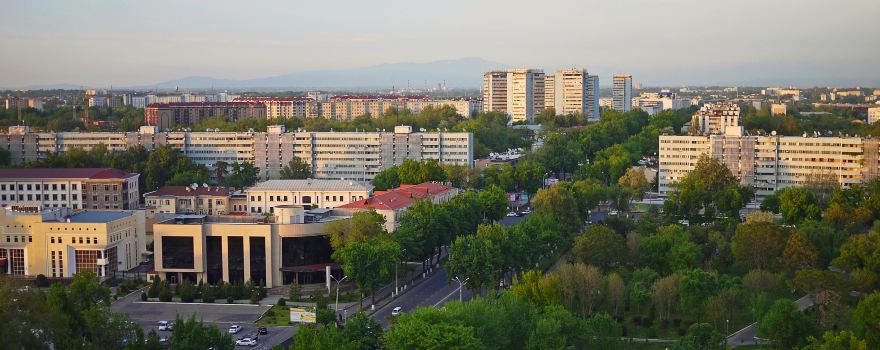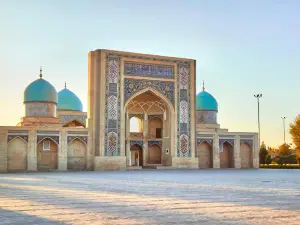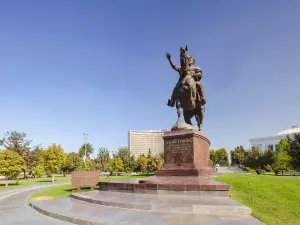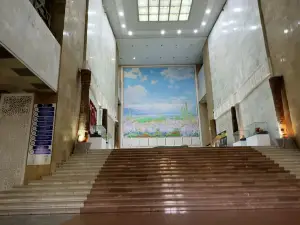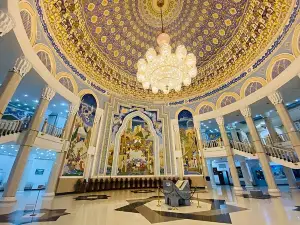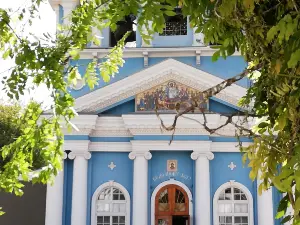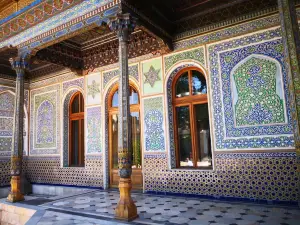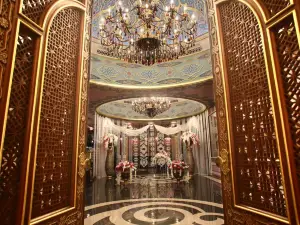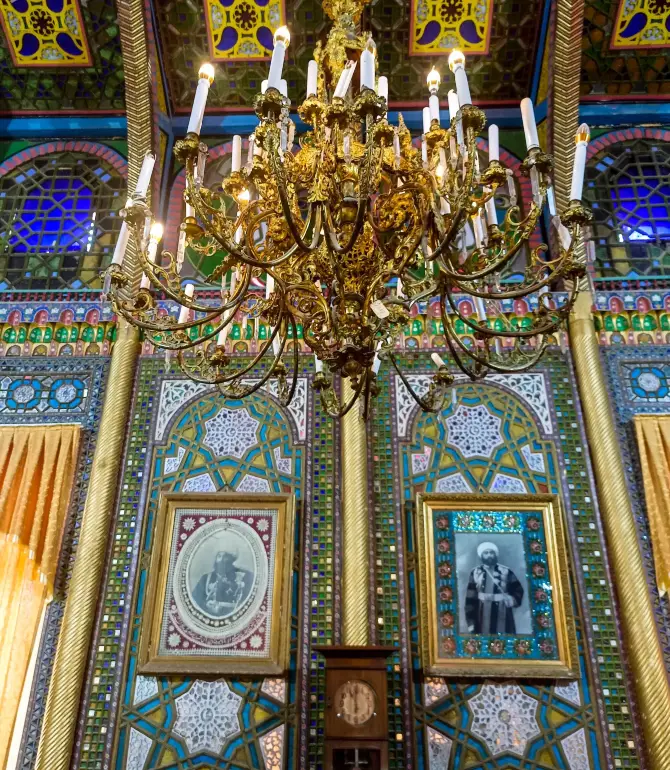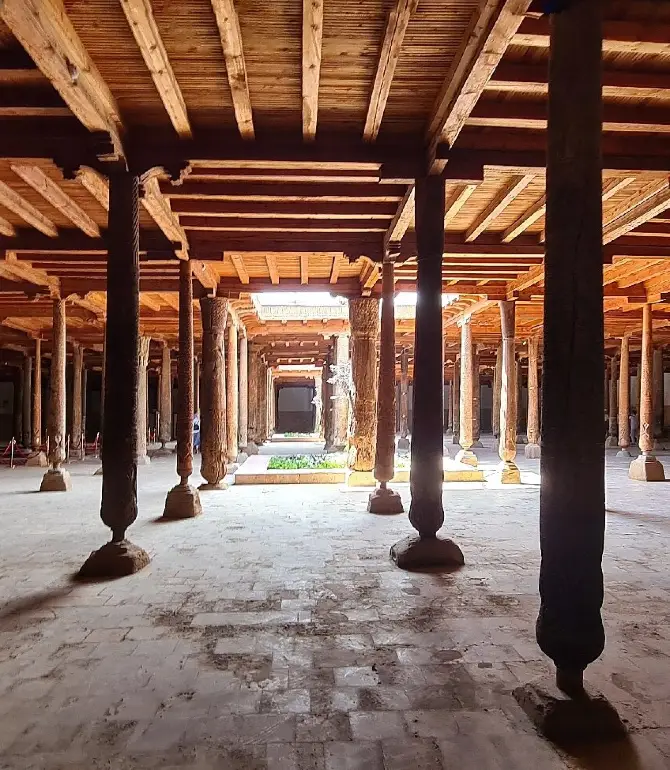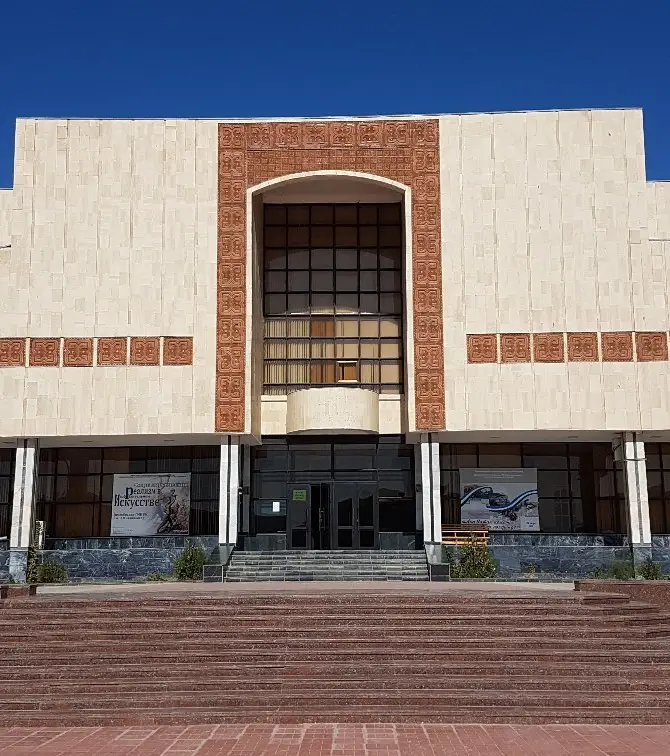Photos
Tashkent
Things to Do in Tashkent in 2025 - Top Attractions, Local Food, Hotels & Travel Tips (Updated April 2025) | Trip.com
About Tashkent
Recommended trip: 2–4 day(s)
Recommended trip: 2–4 day(s)Current Weather Conditions
Tashkent Local Experiences Map
View Local Experiences on Map
Trip.Best: Tashkent
View More
Things to do in Tashkent
What to Do
Looking for things to do in Tashkent? We provide up-to-date info on everything from must-see scenic spots to local hangouts.
View More
Amir Temur Square
5.3
4.6/525 Reviews
Chorsu Bazaar
4.8
5.0/52 Reviews
Holy Assumption Cathedral Church
4.6
4.8/54 Reviews
Tashkent Television Tower
4.6
4.5/511 Reviews
Where to Stay
Discover the most popular places to stay in Tashkent, complete with recommendations from fellow travelers and special hotel offers
View More
What to Eat
Want to eat like a local? Don't miss out on these top Tashkent dishes and foodie spots.
View More
Tashkent Moments: Through Travelers' Eyes
Post
#Recommended
#tashkent
#uzbekistan
#springwander

Known as the "Little Disneyland of Central Asia," this is a must-visit attraction in Uzbekistan.
The Wandering Foodie s Adventures
18

Tashkent: A shining pearl on the ancient Silk Road, a journey to explore the treasures of Central Asia.
LunaSerenity
7

celebrateit
Uzbekistan Bazaar
Eketiko
6

Tashkent City Walk: Unlock a Wonderful Journey in Uzbekistan.
HarperHarris
2

springwander
A Magical City
Matt’s Travels
2

favouriteairline
TURKISH AIRLINES
andromeda311d
2

Tashkent, Uzbekistan.
stellara_2235
5

springwander
Tashkent’s Towering Tower
Matt’s Travels
2
View More
What People Are Saying About Tashkent
Write a Review
Hazrati Imam Mosque
超能逛的Attlee
Amir Temur Square
超能逛的Attlee
State Museum of the History of Uzbekistan
Invisible Wind
Chorsu Bazaar
Ncholck
State Museum of the Temurids
zinnia_615
Holy Assumption Cathedral Church
Invisible Wind
Tashkent Television Tower
M23***52
Metro Taschkent
旅行者海琳娜
Museum of Applied Arts
Invisible Wind
Magic City Park
Katalina Sel
Best of Tashkent
Popular Types of Attractions in Tashkent
Popular Attractions in Tashkent
Popular Ranked Lists
Top 20 Local Restaurants in Sapporo | Top 9 Local Restaurants in Brisbane | Popular Luxury Hotels Near Toap | Top 6 Best Things to Do in Hezhou | Popular Local Restaurants in Vienna | Top 10 Best Things to Do in Hechi | Top 10 Local Restaurants in Orlando | Popular Restaurants for Views & Experiences in Zaandam | Popular Premium Hotels in Port Harcourt | Popular Luxury Hotels Near En Gev | Top 10 Local Restaurants in Zhuzhou | Popular Luxury Hotels Near East Brunswick | Popular Premium Hotels in Miches | Popular Luxury Hotels Near Korcula | Popular Premium Hotels in Thap Put | Popular Premium Hotels in Sestroretsk | Top 18 Local Restaurants in Kunming | Top 15 Best Things to Do in Ganzi Prefecture | Popular Premium Hotels in Fahaheel | Top 5 Best Things to Do in Danzhou | Popular Best Things to Do in Jinchang | Popular Best Things to Do in Heze | Top 3 Best Things to Do in Fuzhou | Popular Luxury Hotels Near Fahaheel | Popular Premium Hotels in Tachira | Popular Luxury Hotels Near Grad Korcula | Top 12 Local Restaurants in Akureyri | Top 10 Local Restaurants in Calgary | Top 4 Best Things to Do in Yingkou | Popular Luxury Hotels in Oualidia
Popular Restaurants in Tashkent
Sette Restaurant & Bar | Caravan | Afsona Restaurant | Yapona Mama | Shedevr Garden | Assorti | City Grill | GOSHT | Black Bear Kofi | MONA Restaurant & Lounge | Khiva Restaurant | Teppanyaki | JOY Restaurant & Bar | Ristorante Semo de Roma | TIBONE Steak-pub | Restaurant Tarona | Affresco | Sultan Saray | CMI bar | A Cafe | Steam Bar | Broccoli | The Irish Pub & Restaurant | Puteshestvennik | B&B Coffee House | Basilic Restaurant | SIESTA Pub & Restaurant | Bibigon Cafe | Pie Republic | Sunduk
Popular Destinations
Vietnam Travel | Riyadh Travel | New York Travel | Antalya Travel | Guangdong Travel | Mexico City Travel | Wenzhou Travel | Vancouver Travel | Toronto Travel | Hohhot Travel | Zhengzhou Travel | Moscow Travel | Saint Petersburg Travel | Taipei Travel | Vaasa Travel | Emeishan Travel | Germany Travel | Luohu District Travel | Cape Town Travel | Ambap Travel | Korari Lachchan Shah Travel | Muravl' Travel | Pedro Meoqui Travel | El Arrayan Travel | Lunezhki Travel | Skydra Travel | Pinos Travel | Stallwang Travel | Nizam Dandi Travel
Recommended Attractions at Popular Destinations
Bangkok attraction near me | Manila attraction near me | Tokyo attraction near me | Taipei attraction near me | Hong Kong attraction near me | Seoul attraction near me | Kuala Lumpur attraction near me | Los Angeles attraction near me | Shanghai attraction near me | New York attraction near me | Shenzhen attraction near me | Osaka attraction near me | Singapore attraction near me | London attraction near me | Guangzhou attraction near me | San Francisco attraction near me | Beijing attraction near me | Macau attraction near me | Bali attraction near me | Jakarta attraction near me | Paris attraction near me | Ho Chi Minh City attraction near me | Istanbul attraction near me | Phuket attraction near me | Chicago attraction near me | Seattle attraction near me | Toronto attraction near me | Orlando attraction near me | Cebu attraction near me | Chiang Mai attraction near me
Popular Trip Moments
First meal in Uzbekistan | [Uzbekistan] A place where you can watch live cooking of traditional dishes✨ | Park V Tashkent - A hidden Gem | A Modernist Masterpiece | A Park to Ponder | Repealing Repression in Tashkent | Tashkent’s Towering Tower | Amazing Assumption | A Magical City | A Park of Heros | One-day cultural tour in Tashkent | Visa-free travel to Kazakhstan and other countries! A super comprehensive guide is here! | 5-Day Uzbekistan Tour: A Super Detailed Guide You Must Save! | [Uzbekistan] Don't be afraid of the weak yen! A must-see! Hidden gems of Uzbekistan✨ | Explore the interwoven charm of ancient and modern Tashkent, Uzbekistan. | Tashkent City Walk: Unlock a Wonderful Journey in Uzbekistan. | A 10-day tour of Central Asia | Uzbekistan 6-Day Tour: A Super Detailed Guide Unveiled | A Relaxing 6-Day Getaway to Uzbekistan During the Short Holiday | A 6-Day Uzbekistan Itinerary for the Qingming Festival | I only recommend this place for a tour of Uzbekistan and other countries | A 6-Day Uzbekistan Adventure: Your Detailed Guide | Serious Learning of Uzbek History at the State Museum of History in Tashkent | Uzbekistan Bazaar | Uzbekistan: A mix of the East and the West, an Arabian world | Uzbekistan Hotels | 6-Day Uzbekistan In-Depth Tour: Comprehensive Guide | Gulnara Guesthouse/Uzbekistan | Kukeldash Madrasah/Uzbekistan | Tandiriy Restaurant/Uzbekistan.
Popular Travel Types
More Things To Do in Tashkent
Tashkent Airport & Train Station Pick Up & Drop Off | Tashkent City Tour | Heliocomplex "Institute of the Sun" - Remnants of USSR | Day Tour to Penjikent (Tajikistan) from Samarkand. | All in One Day Tour of Samarkand from Tashkent | Samarkand One Day Tour - Departure From Tashkent | Khujand Day Tour from Tashkent | Tashkent City Tour | Fergana Valley Tour | Tashkent Mountain Tour | Bukhara One Day Tour - Departure From Tashkent | Uzbekistan Tashkent Minor Mosque + Hazrat Imam Mosque + Assumption Cathedral one-day tour | Global 92 Countries 4G/5G eSIM | Day Pass/Total Package | 1-30 Days | QR Code | Kazakhstan + Uzbekistan + Kyrgyzstan eSIM | 4G | High Speed Data | 1-30days | QR code | Global 5G Prepaid eSIM: 108 Regions, 1-30 Days, Tethering Support, Instant QR Setup | Uzbekistan eSIM | 4G | Total Package&Day Pass | Natural Day | 1-30days | QR code | Middle East 5G eSIM | Seamless Connectivity Across Egypt, UAE, Israel & More | Customizable Data Plans (1-30 Days) | Instant Setup via QR Code | Global (147 countries) | 4G/5G eSIM | Daily/Data packages | 24-hour billing | 1-30 days | QR code | Global eSIM (149 countries/regions) 4G/5G | eSIM | China Mobile CMLink | 1-30 day optional | Instant order and use | Supports hotspots | QR Code | 42 European countries|eSIM| Optional days |Total Internet traffic/day|4G/5G|QR Code|Send confirmation immediately|Ready to use | Kazakhstan/Uzbekistan/Kyrgyzstan/Tajikistan | 4G/5G eSIM | Daypass | 24H | 5-30 days | QR code | Uzbekistan 4G eSIM | 3–30 Days Plan | Hotspot sharing | Instant Setup via QR Code
Payment Methods
Our Partners
Copyright © 2025 Trip.com Travel Singapore Pte. Ltd. All rights reserved
Site Operator: Trip.com Travel Singapore Pte. Ltd.
Site Operator: Trip.com Travel Singapore Pte. Ltd.

